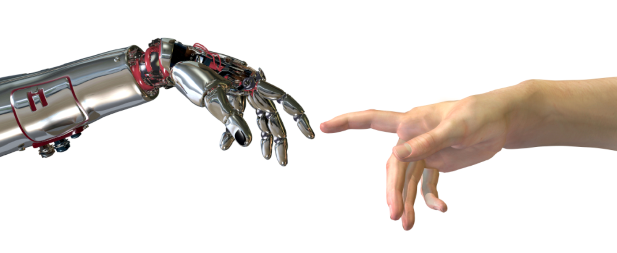Why a CIO's primary responsibility is creating a great work culture.

A couple of months ago, I listened to an expert give a talk on how we live in an age where science fiction is becoming reality, due to advances in technology. He talked about producing replacement body parts using 3D printers (remember Luke Skywalker’s new hand in The Empire Strikes Back?), and retailers using retinal scans to identify customers (like in Minority Report). He talked about robots and their increasing capabilities, and specifically a new class of ‘manufacturing robot.’ These robots get parked next to a person performing a manufacturing task to observe the operation, learn what is required, and eventually replace the human worker.
I smirked while imagining a robot following me around for a week in preparation to replace me as the CTO – going to the meetings I attend, listening to the conversations I have with my team and my executive peers, and watching me immersed in all my different activities. But rather than taking over my job, in my version of the story the robot stops to ponder the reality of its new job assignment and, before I have even emptied out my desk, it quickly wheels its way out the back door of the building, never to be seen again.
|
“There is one supreme responsibility I have as an IT leader: to create great work cultures.” |
OK, that might be a bit extreme but, let’s face it, as IT leaders our roles are complicated and challenging. We have to deliver operational excellence while leading our organizations (and not just the IT organization) into a rapidly-changing, complex and highly-ambiguous digital future. No two situations are ever the same, and there is no part of this job that a robot could learn to handle. In this environment, it is sometimes difficult to know where and how to spend our time. But the older and (hopefully) wiser I become, the more I understand that there is one supreme responsibility I have as an IT leader: to create great work cultures.
What is Work Culture?
Now, the word “culture” can be somewhat nebulous and it might mean different things to different people. For my purposes, work culture can be defined as follows:
work culture: the set of rules, spoken and unspoken, that determine:
- what work gets done
- how the work gets done, and
- how we interact to get the work done.
Another way that I think of culture is like this: it is the container inside of which work is done. Sticking with this analogy, my greatest contribution to the organization is to design and enhance this container.
Culture of Trust and Ownership
If you accept my premise that my most important responsibility is as designer of culture, the next question to answer is, “What are the attributes of a great culture?” Through experience I have learned that the answer to this question is a culture based on trust and ownership.
Let’s start with a culture of trust.
In a culture of trust, the leader assumes that everyone will do the right thing as long as they know what the right thing is. This is different from a culture of control in which no one can do anything – even the right thing – without permission.
In a culture of ownership, the leader makes sure that everyone understands what needs to be done and why it matters. The people doing the work own how they will get the right things done. In an ownership culture, the only things the leader measures are the results. The teams own the methods, or the how.
Culture Investments Pay Off
Creating a culture of trust and ownership is not for the faint of heart. To do this requires that you forget much of the subject matter expertise you have gained and ask that your teams develop expertise of their own. If you prescribe to them exactly how to do something, or solve a problem, you’ve just taken away their ownership.
Creating a culture of ownership and trust also requires that you purge your life of many of the controls that make you comfortable, such as project reviews, project updates and any form of micro-management.
But, creating a culture of trust and ownership is well worth it. For just a minute, think back over the many bosses you have had during your career. OK, now which ones were the best leaders? I can pretty much guarantee you that those you think were the best leaders were the ones that trusted you and let you own the results. You probably did your best work and were the most motivated when you worked with these “trust and ownership” leaders.
Don’t your teams deserve the same?
Over the past few years, I have focused my leadership attention on designing a “trust and ownership” work culture. As I have become better at trust and ownership, I have also done the best leadership work of my entire career.


Add a Comment